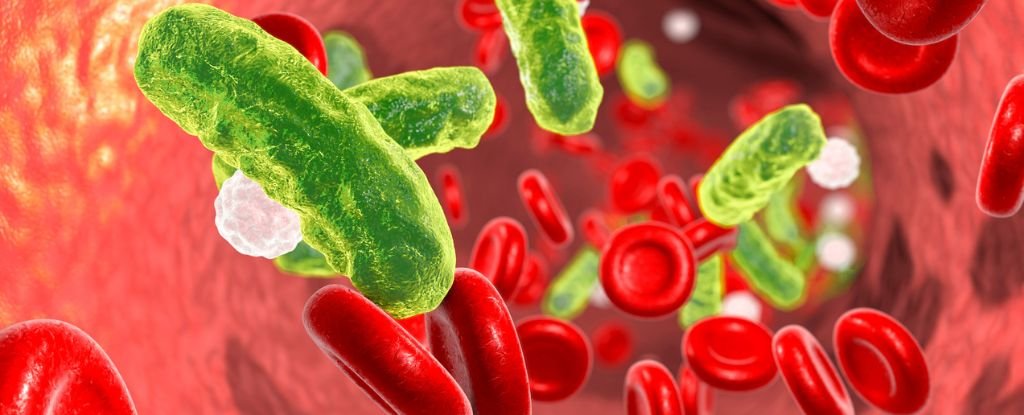Playing tag, riding bikes, and climbing trees are among the many joys of childhood that leave kids happily worn out and panting heavily for air. For those with lung disorders, growing up can look different, with breathing troubles that cause fatigue and exercise intolerance along with increased susceptibility to respiratory infections.
Two children with these challenges caught the attention of Anna-Lena Neehus when she was a graduate student in Jean-Laurent Casanova’s laboratory at Imagine Institute of Genetic Diseases. Because the children were sisters and presented with similar symptoms, Neehus, currently an immunologist at Boston Children’s Hospital, suspected that there was a genetic component to their disorder. She began a study, which she recently published in Cell, that ultimately involved an international cohort of researchers studying the genetics of children around the globe.1 The researchers found that mutations in a monocyte receptor had far-reaching implications for proper lung and immune functions. These results could lead to new therapeutics and diagnostics for children with similar afflictions.
The sisters that Neehus studied had several lung abnormalities: a history of respiratory infections, polycystic lung disease, and pulmonary alveolar proteinosis (PAP), a disorder characterized by lung surfactant accumulation.
“We looked at their whole exome sequencing [data],” said Neehus. “We found that the two sisters only had one variant in common. That was in CCR2.” The C-C motif chemokine receptor 2 (CCR2) gene encodes a monocyte surface receptor that binds the chemokine (C-C motif) ligand 2 (CCL-2). Acting like a siren song, CCL-2 binding lures monocytes into the alveoli where they mature into macrophages.2

This is a good example of how you can actually get an answer and then potentially get a treatment, because if you can identify the pathway, then you can identify a target for therapy.
– Cormac McCarthy, University College Dublin
The CCR2 variants piqued Neehus’s interest because of macrophages’ role in lung surfactant homeostasis.3 Alveolar cells constantly produce surfactant, a lipid- and protein-rich substance important for preventing lung collapse and for promoting the innate immune response. Macrophages differentiated from monocytes recruited to the alveoli by CCL-2 consume and recycle surfactant into its basic parts. Without these cells, surfactant accumulates in the airspaces, causing PAP’s characteristic symptoms, including difficulty breathing, fatigue, and, in severe cases, respiratory failure.4
PAP is most commonly caused by an autoimmune condition.3 Congenital forms of the disease exist but are less understood. “There’s ultimately no real cure for this except very severe procedures such as bone marrow transplantation or lung transplantation, depending on the genetic defect that causes the disease,” said Neehus.
To further explore the genetic basis of the sisters’ rare lung disease, Neehus and her collaborators recruited additional patients from Iran and the United States. In the end, they gathered a cohort of nine children who had similar lung phenotypes and interesting mutations in CCR2. Most of the children’s variants were in the gene’s transmembrane domain. Introduction of the variants into healthy cells abolished CCR2 protein expression, and the patients’ own monocytes lacked the receptor.
Neehus’s collaborators next set up an in vitro cell migration assay to see if CCR2-deficient cells were indifferent to CCL-2. They added patient-derived monocytes to a custom-made chamber where they could capture microscopy videos of the cells’ movements in real time.5 After applying the CCL-2 ligand to the opposite end of the device, monocytes with functional CCR2 rushed up the density gradient toward their ligand. The patients’ cells, however, were unresponsive to CCL-2 and meandered directionless around the chamber.
Consistent with lung surfactant build up in the children’s lungs and the monocyte migration impairment, the researchers found a decreased number of alveolar macrophages in their patients’ bronchoalveolar lavage samples. These findings point to a mechanism where proper CCL-2 binding to CCR2 is essential for monocyte migration into the alveoli, where they ultimately mature into surfactant-eating macrophages.
In addition to PAP, the children had recurring respiratory infections. In fact, several had a rare reaction to the live-attenuated bacillus Calmette Guérin (BCG) vaccine against tuberculosis. Recruiting monocytes to other areas of the body such as the skin is also mediated by CCL-2 signaling. Neehus speculated that this related to the child’s adverse reaction. “If we have less attraction of monocytes to the site of the BCG vaccine, probably the BCG cannot be controlled sufficiently as it would in healthy individuals,” said Neehus. “That’s how they ultimately get sick.”
The third major disorder afflicting the patient cohort was progressive polycystic lung disease. “I’m quite surprised by the extent of the cysts,” said Cormac McCarthy, a pulmonologist at the University College Dublin, who was not involved in this study. “Under CT scan, they had, at a very young age, very severe cystic destruction of their lungs.”
The researchers hypothesized that the lung cysts formed via a CCL-2-mediated mechanism. With no CCR2 receptors to internalize their ligands, the patients had high CCL-2 levels, which could cause chemotaxis of lymphocytes through alternative surface receptors. “This will lead to the recruitment of a lot of immune cells that usually shouldn’t be in the lung. This compresses the airway, and this leads ultimately to disease development,” Neehus said.
While further studies are needed to understand cyst formation in the absence of CCR2, the children in this study had elevated blood CCL-2 levels, which suggests that a simple blood test could be informative for others with similar symptoms. Because children with inherited CCR2 deficiency have higher infection risks, it would be important for parents to know early on if they should take extra care to prevent lung infections in their sensitive children, or if their children should avoid live-attenuated vaccines such as BCG.
“If you’re interested in really understanding rare diseases, understanding the molecular pathogenesis is key,” said McCarthy. “What’s very nice with this study is not only do they identify a mechanism and a target and potentially a genetic cause to that, they describe a new condition but then also … potentially, how to screen for it.”
References
- Neehus AL, et al. Human inherited CCR2 deficiency underlies progressive polycystic lung disease. Cell. 2024;187(2):390-408.e23.
- Maus UA, et al. CCR2-positive monocytes recruited to inflamed lungs downregulate local CCL2 chemokine levels. Am J Physiol Lung Cell Mol Physiol. 2005;288(2):L350-L358.
- Huang X, et al. Alveolar macrophages in pulmonary alveolar proteinosis: origin, function, and therapeutic strategies. Front Immunol. 2023;14.
- Carrington JM, Hershberger DM. Pulmonary alveolar proteinosis. In: StatPearls [Internet]. StatPearls Publishing; 2023. Accessed March 24, 2024.
- Vargas P, et al. Study of cell migration in microfabricated channels. JoVE. 2014;(84):e51099.










